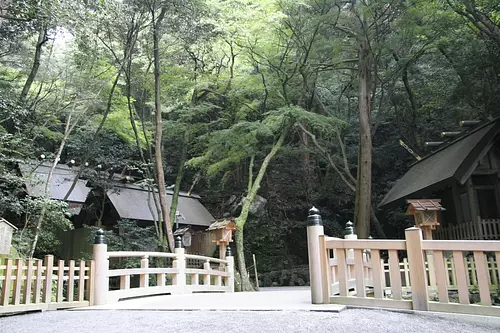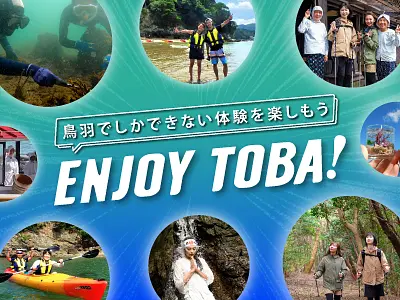Pray for happiness at Tado Taisha Shrine, TadoTaishaShrine deity of the Kitaise region! What is “Successful Mamoru”? Let me introduce you in detail.
掲載日:2019.10.08
Tado TadoTaishaShrine is located in Tado, Tado-cho KuwanaCity City, Mie Prefecture, on the border with Aichi and Gifu Prefectures. This shrine is visited by many worshipers not only from Mie Prefecture but also from the Tokai region. Because of its close relationship with IseJingu, there is an adage that goes, ``If you go to Ise, you should also visit Otado.
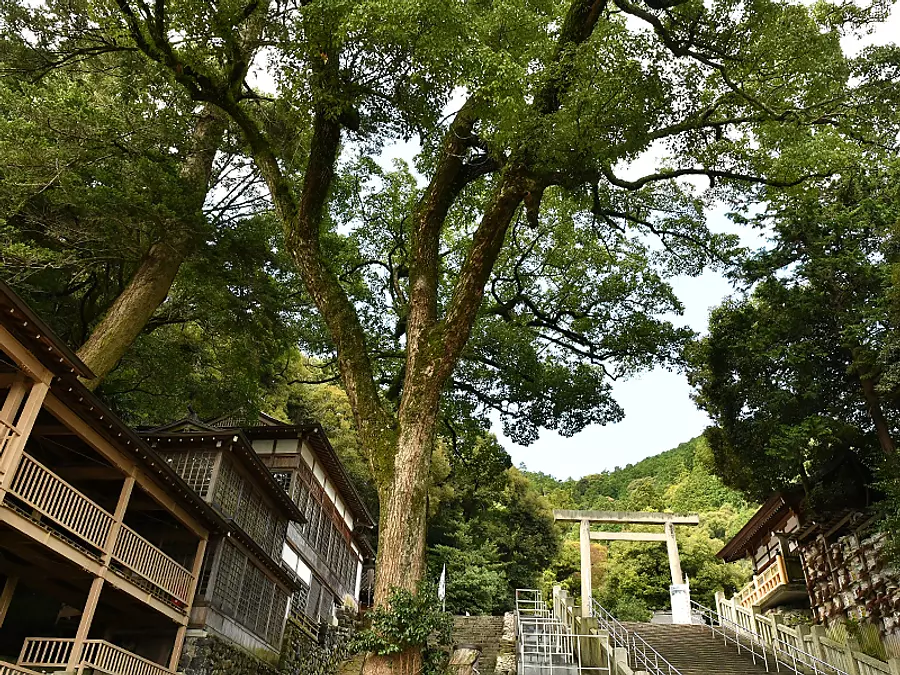
Because of its close relationship with IseJingu, there is a saying that ``If you go to Ise, you should also pray, but if you don't go to Ise, it is only TadoTaishaShrine, which is also known as Kita Ise Grand Shrine, is It is located in Tado, Tado-cho, KuwanaCity located on the prefectural border with Aichi and Gifu prefectures.
It is worshiped as the guardian deity of the Kitaise region, and many worshipers come from Mie Prefecture and the Tokai region.
Since ancient times, Mt. Tado (403 meters above sea level), where the gods sit, has been revered as the sacred mountain, and is believed to have been worshiped by people since ancient times. The shrine is said to have been built during the reign of Emperor Yuryaku, the 21st emperor, in the late 5th century.
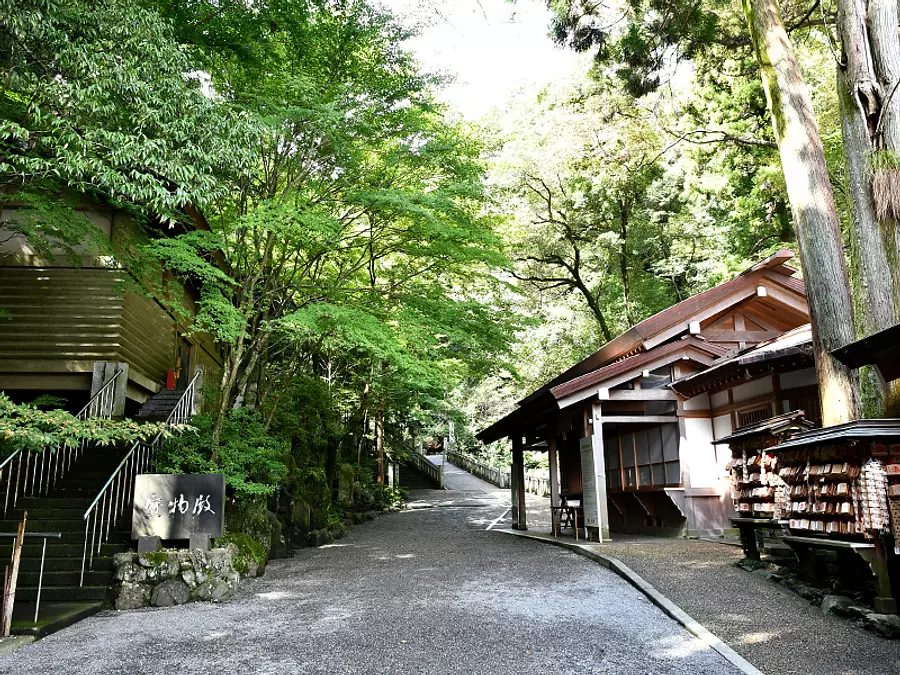
TadoTaishaShrine includes the main shrine, ``Tado Shrine,'' whose main deity is Amatsu Hikone no Mikoto, and the annex Betsugu, ``Ichimokuren Shrine,'' which enshrines Tenmoku Ichika no Mikoto. (Ichimokurenjinja)”. There are three separate shrines, including Utsukushigozensha, which enshrines Ichikishimahime no Mikoto, and Amaterasu-Omikami, which enshrines Amaterasu Omikami. It is a general term for 12 shrines, including 6 subsidiary shrines, including ``Shoukonsha'', and Shokonsha, a shrine within the precincts.
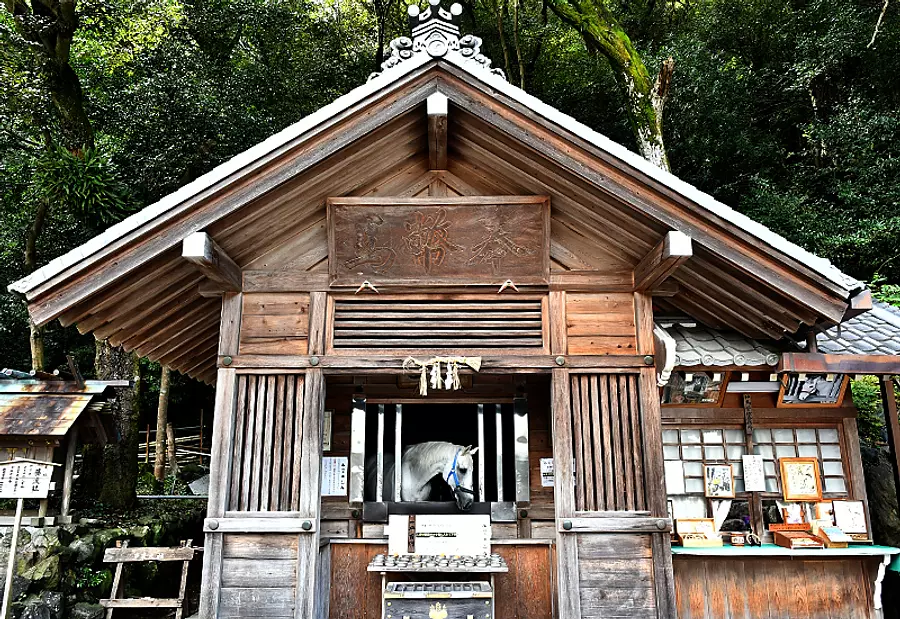
When you go up the front stairs of TadoTaishaShrine and pass through the torii gate, the first thing that greets you is a white horse with adorable eyes.
This is the Shinma "Kinzan". Shrines with living sacred horses are rare in Japan.
At TadoTaishaShrine, they serve as messengers of the gods and welcome worshipers at the ``Jinmesha''.
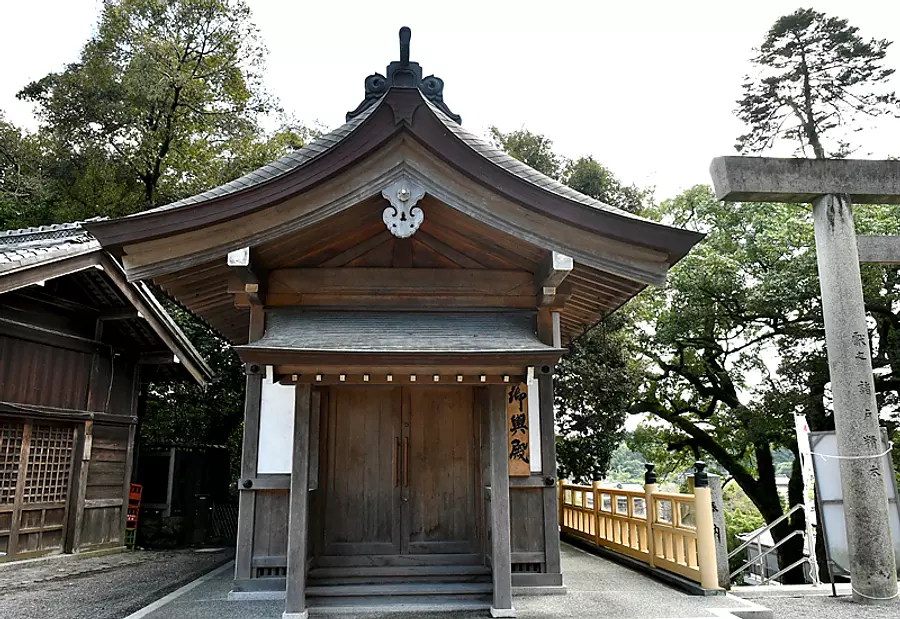
The Mikoshiden is on the right after passing through the torii gate. The mikoshi used during the Tado Festival is kept here.
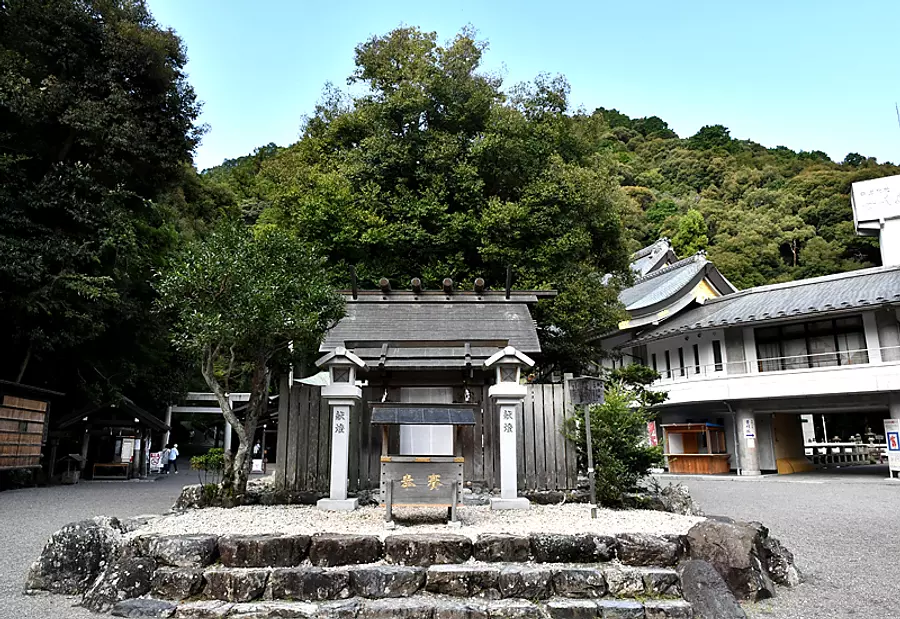
Across from it is the set shrine ``Shingu-sha.''
During the Edo period, when TadoTaishaShrine was being reconstructed, it was enshrined at this shrine when it was given the reinstatement from Mt. Akasaka in Mino Province. For this reason, the deities enshrined here are Amatsu Hikone no Mikoto Sakimitama (Amatsu Hikone no Mikoto Sakimitama) and Ame no Mahitotsu no Mikoto Sakimitama (Amenomachi no Mikoto Sakimitama).
*Kangyo refers to the return of a nobleman, such as the Emperor or Retired Emperor, from a place outside of Japan.
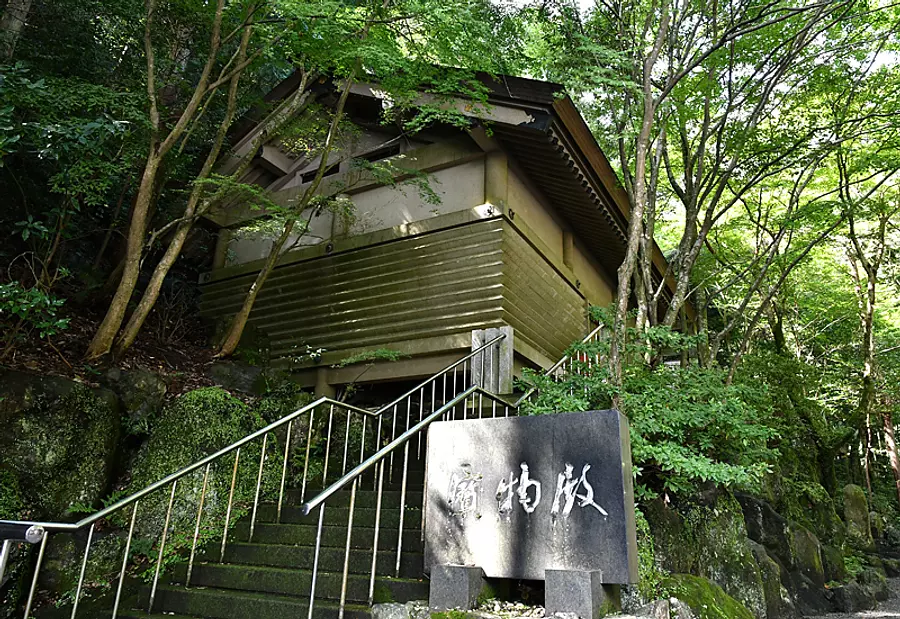
After purifying yourself at the chozuya and proceeding along the approach, you will see the Treasure Hall on your left.
Many treasures are on display, including the Nationally Designated Important Cultural Property, the Tado Jinguji Garan Engi and Shizai Chou, the five gilt bronze bells, and the thirty-faced bronze mirror. I am.
There are many precious treasures that give you a sense of history, so it's a must-see for history buffs.
Public exhibitions are held irregularly.
If you are interested, please contact the shrine.
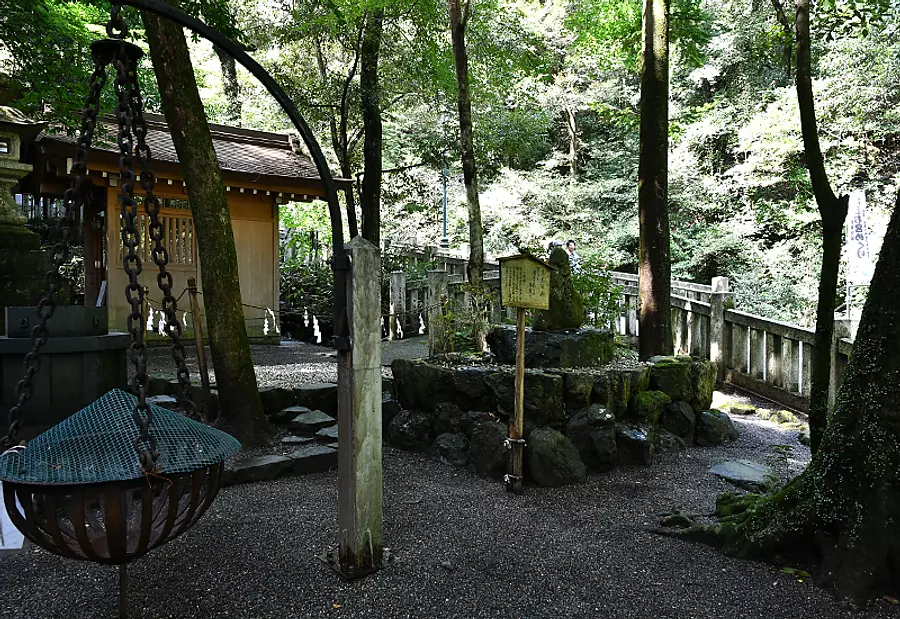
After passing the treasure hall and going up the stairs on the approach, on the right hand side is
There is a monument with the haiku ``O shrine man, scatter my name, Ochiba River,'' which TadoTaishaShrine MatsuoBasho Basho wrote while visiting Tado Taisha Shrine in his ``Nozarashi Travels.''
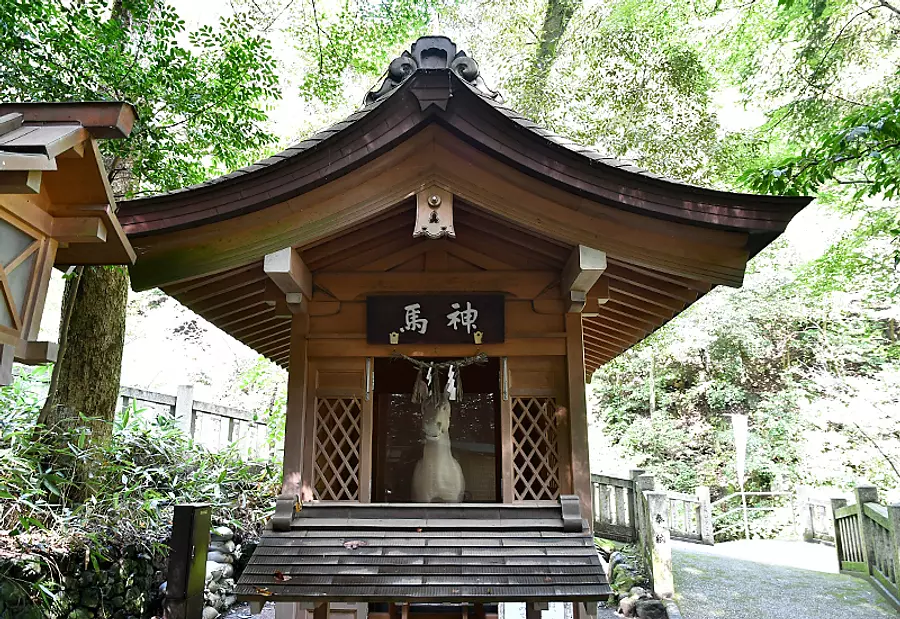
Next to the Basho haiku monument is the ``Hakubasha'' where the sacred white horse associated with the Hakuba legend is kept.
Horses have very strong teeth, so there is a ``bean that prevents teeth grinding'' modeled after this horse.
Hakuba Legend can be found on TadoTaishaShrine 's official website.
Click here for TadoTaishaShrine Hakuba legend!
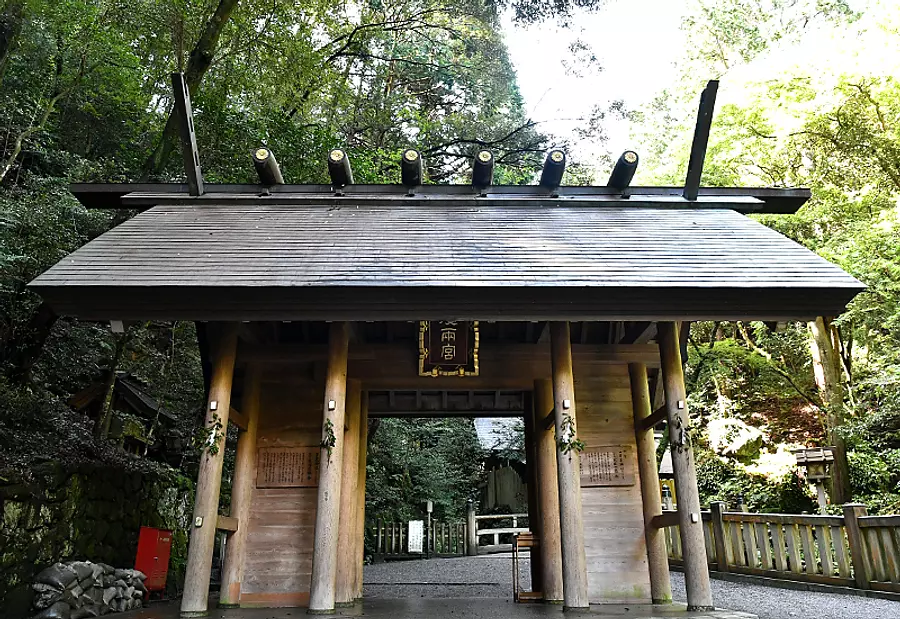
As you go further through the torii gate, you will see the ``Obukimon'' gate.
From here onwards is the sacred area of the main shrine.
Covered in deep greenery, it has a particularly majestic atmosphere that is different from anything you've seen before.
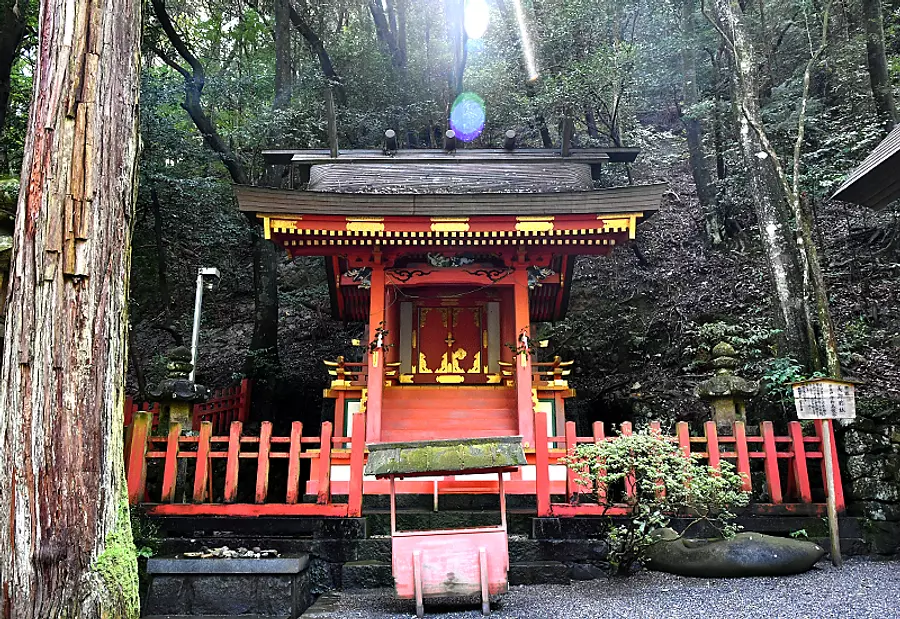
The gorgeous shrine in front of the gate is a recommended spot for women.
Utsukushigozensha Shrine is dedicated to Ichikishimahime no Mikoto.
Since ancient times, it has been believed that the shrine provides protection against ear, nose, and mouth diseases as well as women's illnesses, and many people visit the shrine to offer stones with holes in them and pray for recovery from their illnesses.
In addition, many people offer stones shaped like noses and eyes to become beautiful.
It is a beautiful shrine, and unlike other shrines, the tan lacquer is vivid and beautiful.
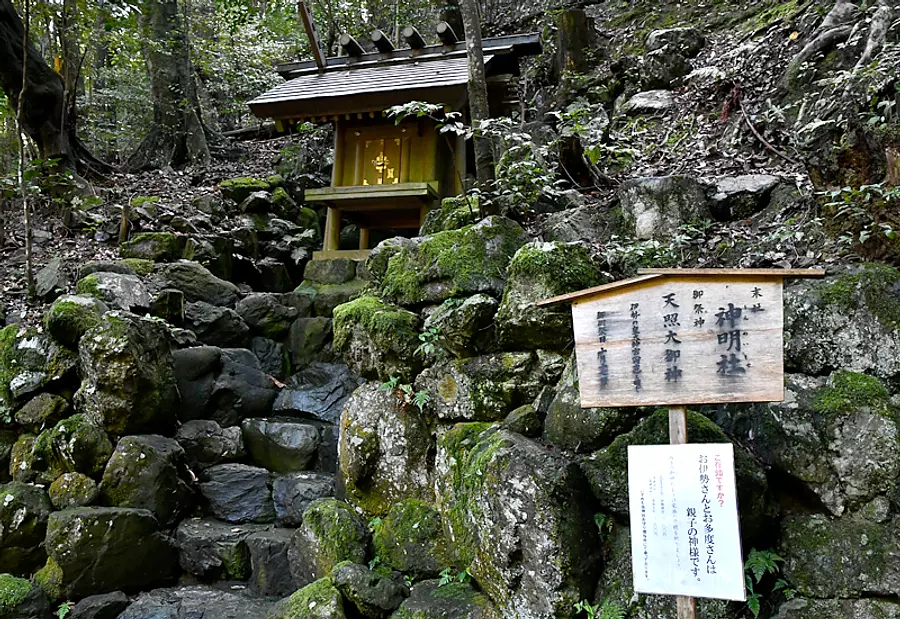
This is Shinmeisha, which is right in front of the main shrine.
Amaterasu-no-omikami, the parent deity of Amatsu Hikone-no-Mikoto, is enshrined here.
The quiet shrine seemed to represent the heart of a mother who watches over the activities of her child from the shadows.
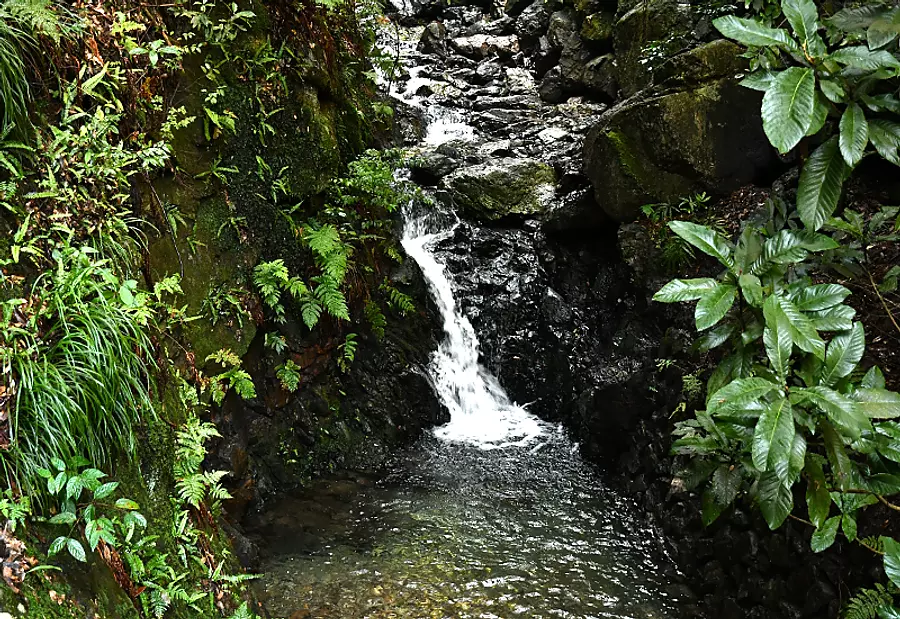
There are waterfalls flowing on both sides of the main shrine, and the sound of falling water, sunlight filtering through the leaves, and the sound of trees swaying in the wind.It is truly a sacred place, filled with a very sacred and majestic atmosphere, and you can experience a time different from everyday life. You can.
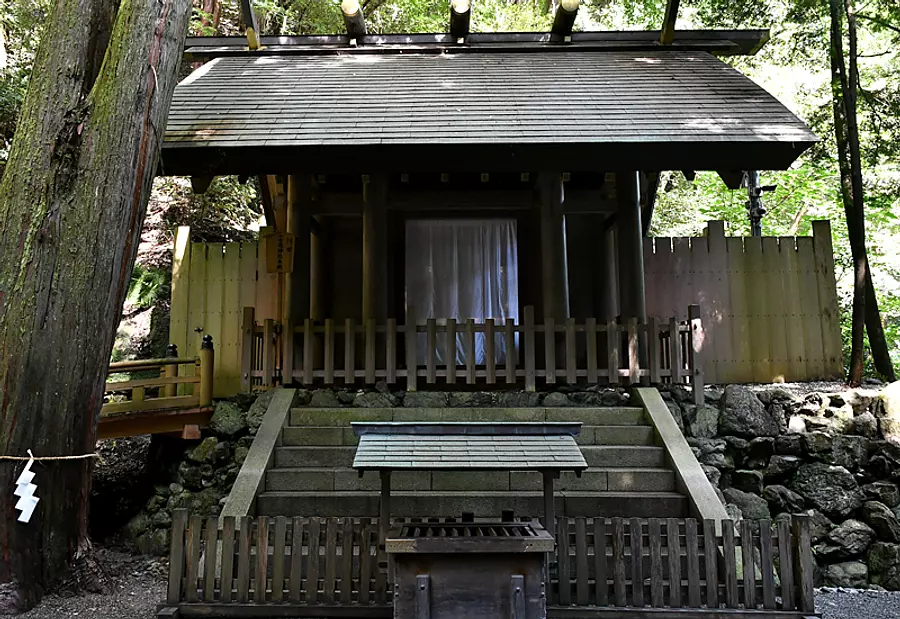
Ichimokurenjinja Shrine is a separate Betsugu located alongside the main shrine.
The ancestral deity of the metal industry, ``Ame-no-Mahitotsu-no-Mikoto,'' is enshrined here, and on November 8th, the ``Fuigo Festival'' is held to pray for work safety for ironworkers and for good fortune in the company. It is done.
It is also said that the gods of the main shrine and Betsugu (both shrines) control the weather by joining forces, and prayers for rain and weather are also held here. Please note that the main shrine of Ichimokuren Shrine does not have a door. This is also rare.
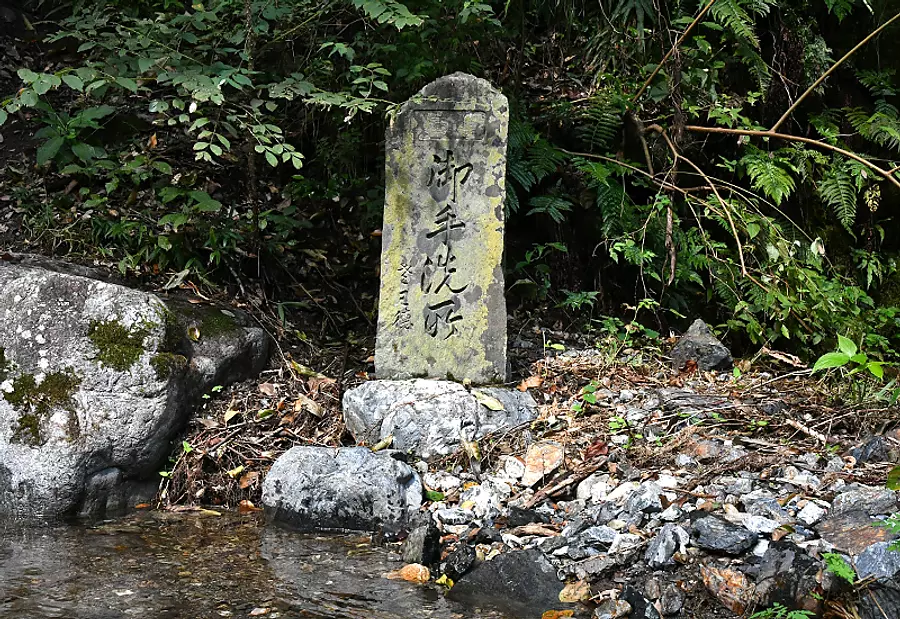
On the way back, you can go down to the Ochiba River that flows beside the approach. This is a traditional Mitarashijo (mitarashijo) where clear, clean water flows and you can absorb negative ions with your whole body.
It is a place where you can feel more at ease after visiting the shrine.
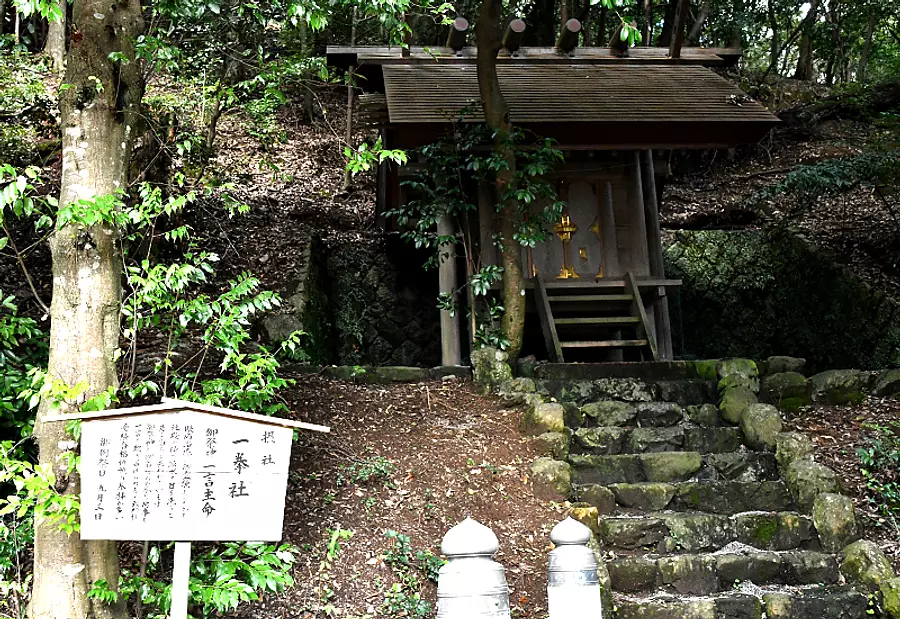
Hitokobushisha, located behind the Gishikiden Hall and next to the Houmeiden Hall, is the shrine where Emperor Yuryaku was born in the mountains of Katsuragi in Yamato (Nara Prefecture). It enshrines the god ``Hitokotonushi no Mikoto'', who is said to have called himself ``the great deity of Katsuragi's ``Hitokonushi no Mikoto,'' who is said to have said that both good and bad deeds can be done in one word. He is worshiped as a god who hears people's wishes with a single word.
Also, there has been a spring of pure water beside Ikkensha since ancient times, and it is said that washing your eyes with this water will protect you from eye diseases, so many people from all over the country came to draw water. is.
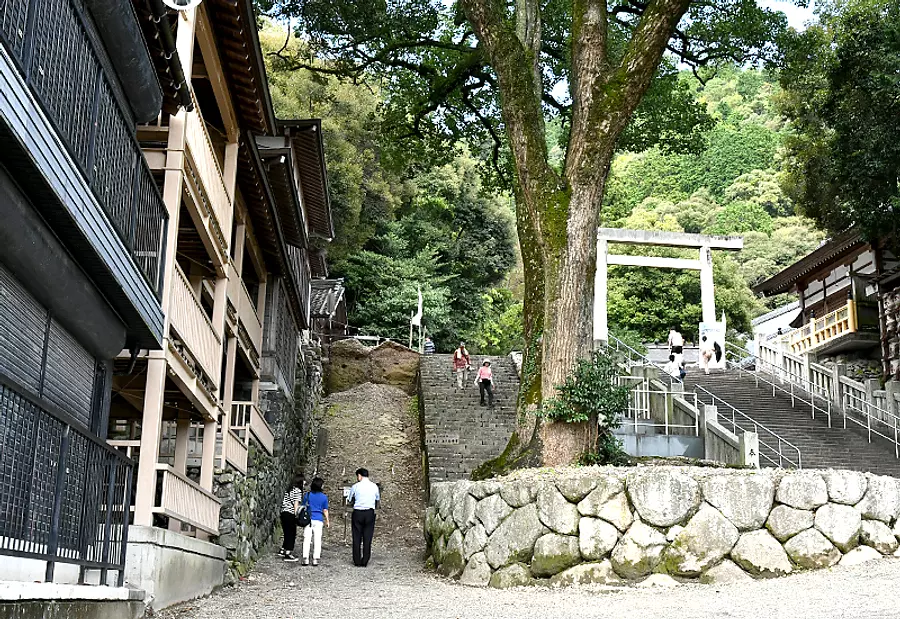
Speaking of TadoTaishaShrine, the ``Ageuma Shinto ritual'' was designated as an intangible folk cultural property of Mie Prefecture in 1978.
In front of the torii gate is a hill that horses run up, more of a wall than a hill.
It makes you wonder if a horse carrying a person could really run up here.
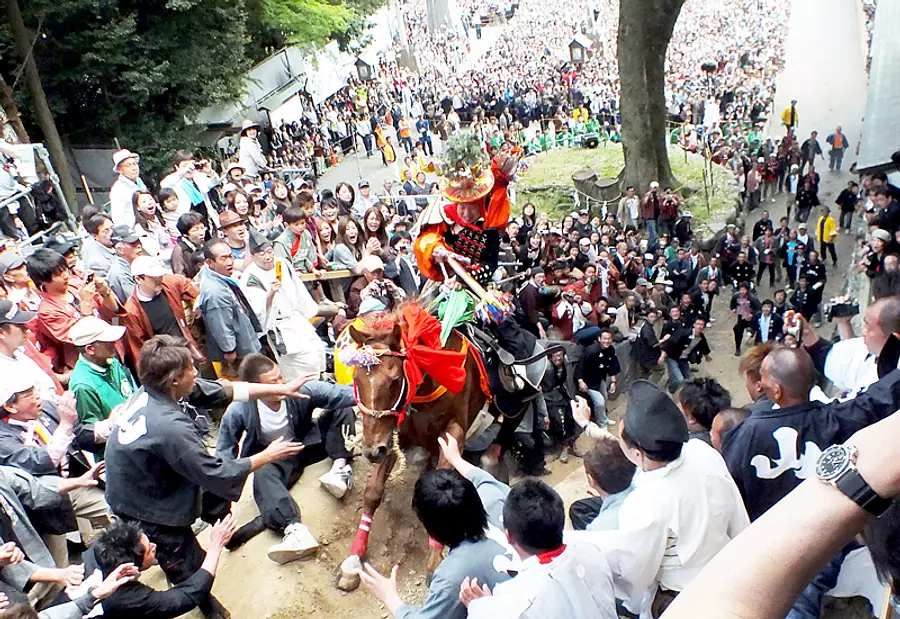
It is said that this Ageuma Shinto ritual began with a samurai family who divided up territory in this area during the Ryoku-O era of the Nanbokucho period, but it fell under the influence of Oda Nobunaga, so the details are not clear.
A young boy chosen by divine fortune-telling from among the parishioners of an area called Mikuriya becomes a jockey and rides up this hill. The number of horses that were able to cross the hill was used to predict whether the crops were going to be good or bad that year, or whether the economy was going to be good or bad.
On May 4th, they will be wearing jingasa and hakama, and on May 5th, they will be riding horses in splendid samurai costumes with flower hats on their heads, and the power and tension of the horse and rider rushing up the hill as one will captivate the hearts of viewers. . It is held on May 4th and 5th every year.
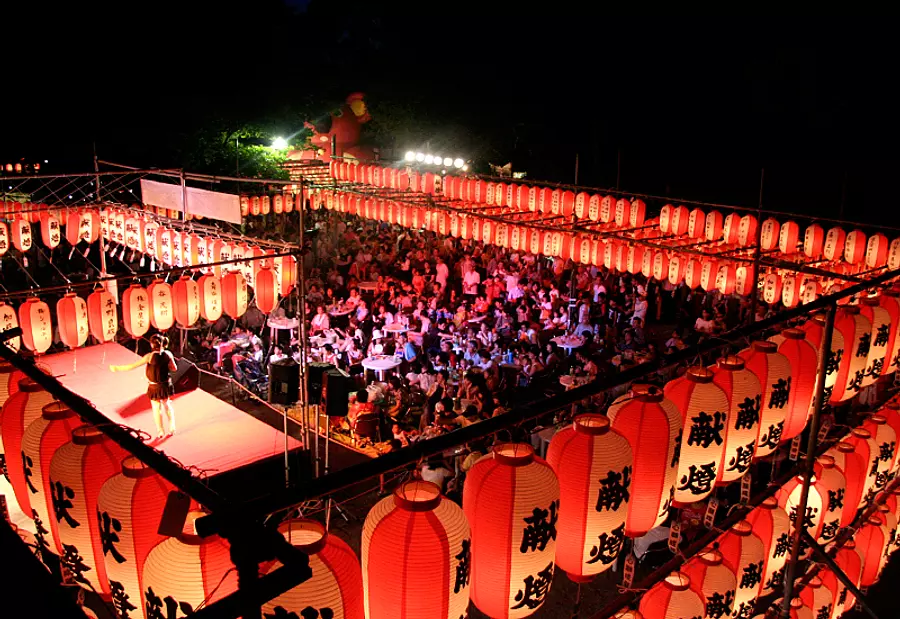
August 11th and 12th is the lantern festival, which is said to be a summer tradition in Tado.
When thousands of lanterns light up all at once, the shrine grounds become a magical world.

In addition, TadoTaishaShrine is a shrine that is deeply connected to horses, and since ancient times there has been a legend that horses are animals that carry people and do not ``tread on people''. It is also a popular shrine for prayers.
It is only about 35 minutes from Nagoya via the Higashi-Meihan Expressway, so on the day of our interview, many people with Nagoya license plates came to pray.
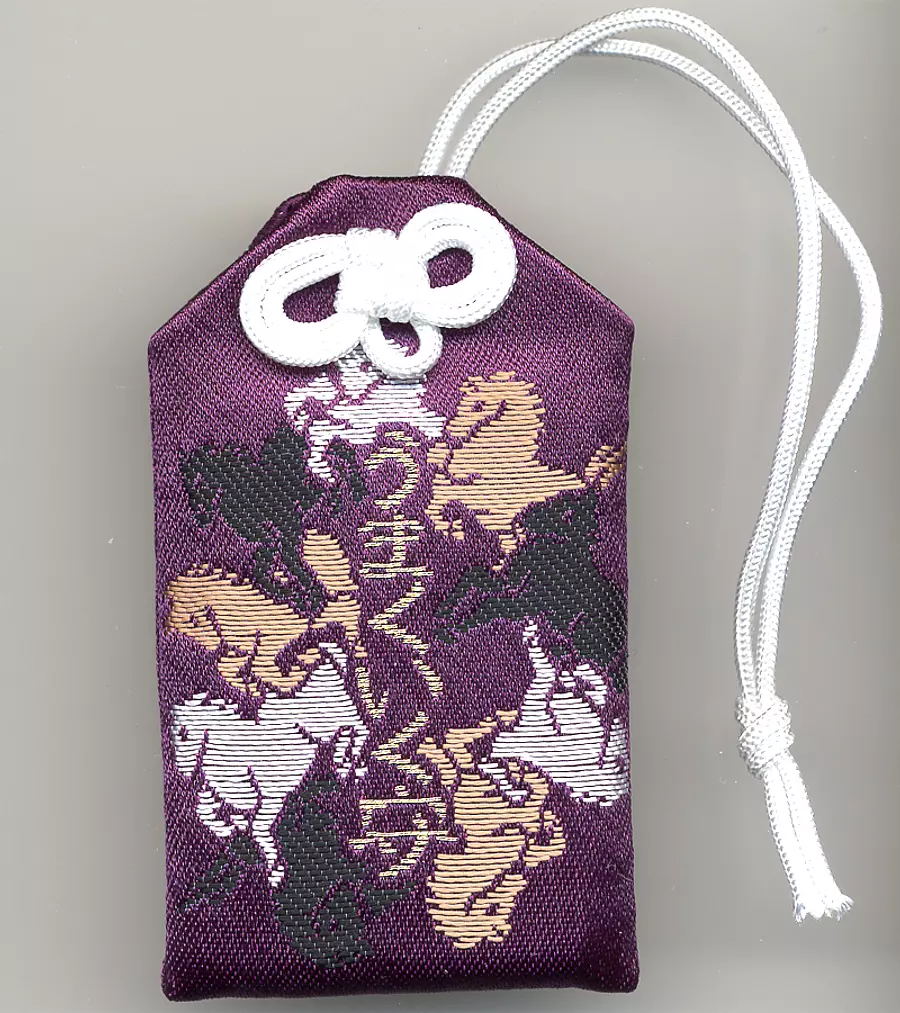
Tado Taisha Shrine is TadoTaishaShrine where a truly miraculous deity is enshrined: a horse-riding ritual that races up with great force, a lively Yabusame ritual where you hit the target in rapid succession.
There are nine votive tablets connected together, each with a picture of a horse written on it.There are nine horses and the names are ``Successful votive tablets'', and nine horses are drawn on the amulet bag, ``Successful charm''. ”, etc., and it will work even if you ask a lot! Many worshipers visit from all over the country.
If you can't narrow down your wish to just one thing, why not visit TadoTaishaShrine?
TadoTaishaShrine
Address: 1681 Tado, Tado-cho, KuwanaCity
TEL: 0120-37-5381
| Category | |
|---|---|
| season | |
| area |

